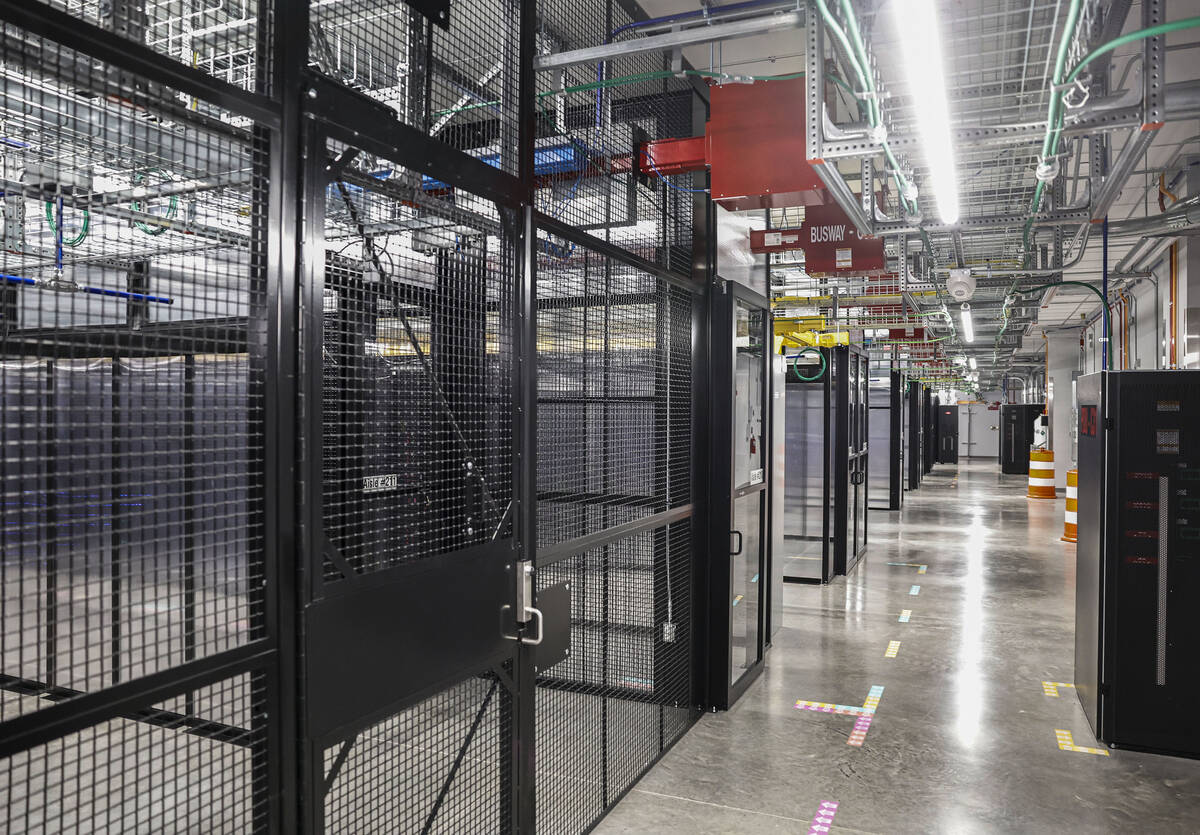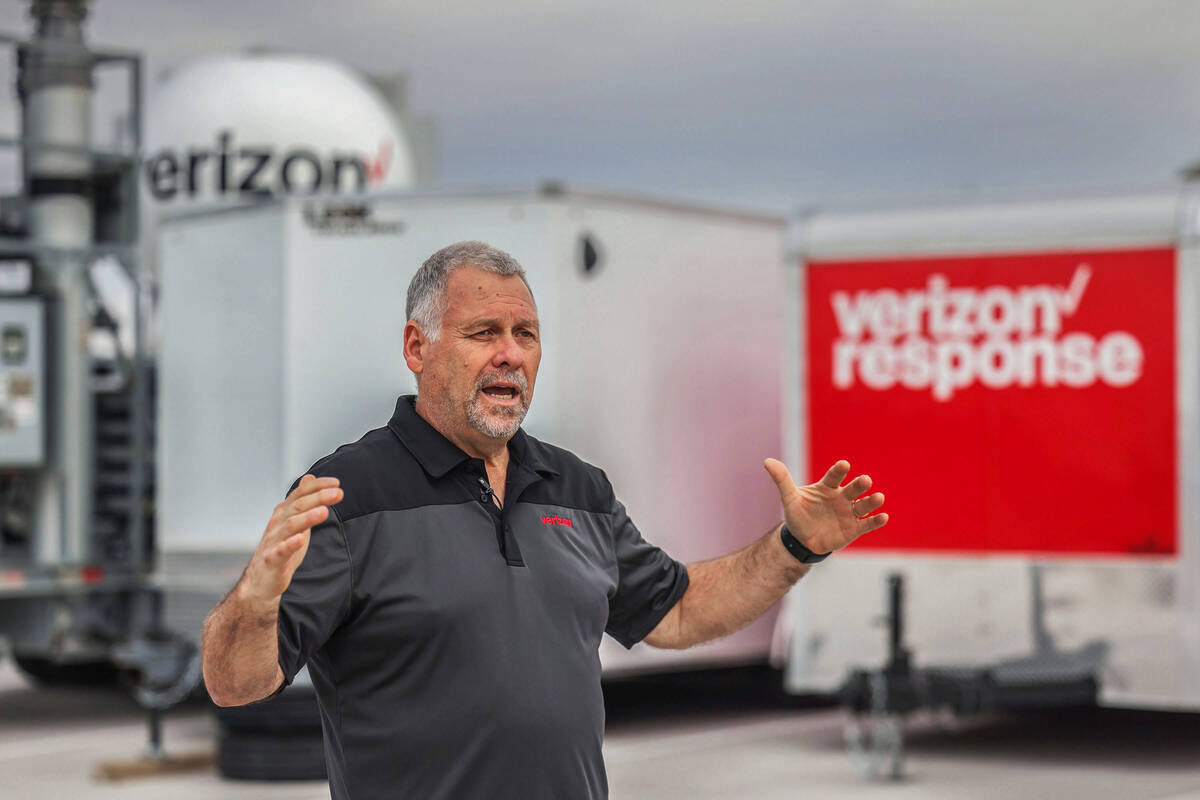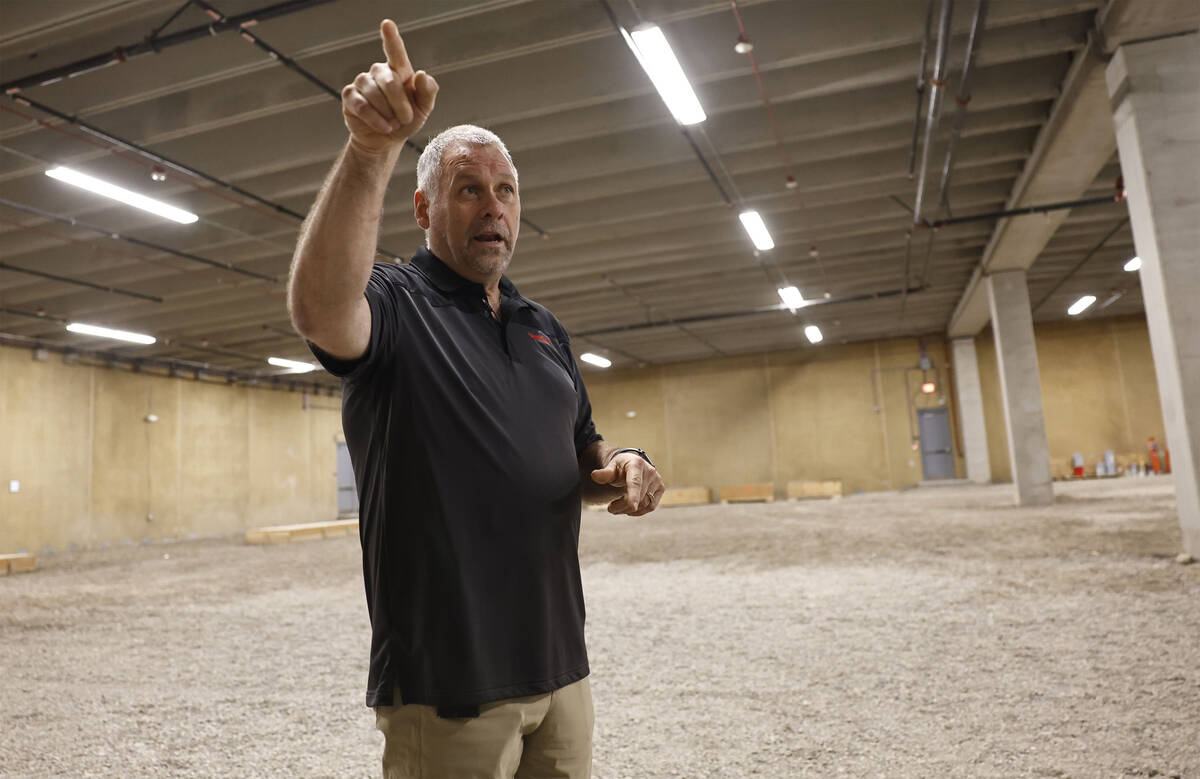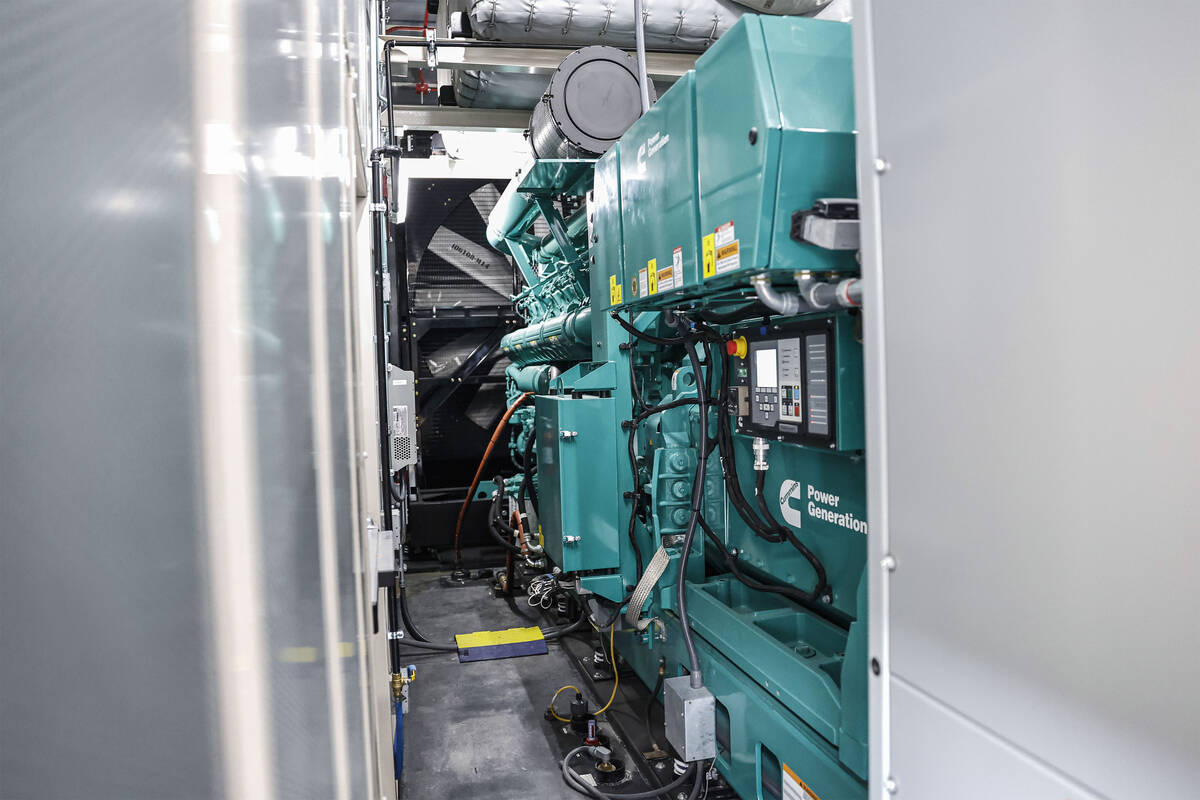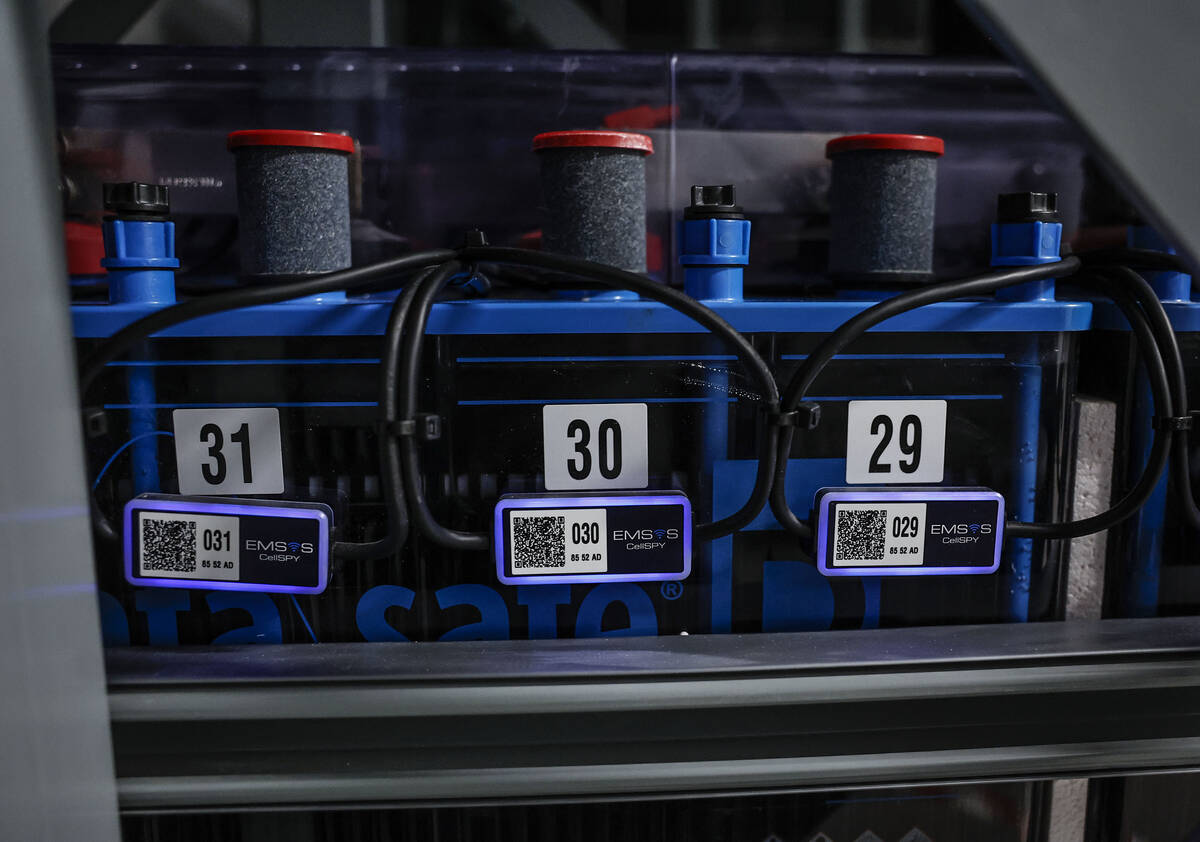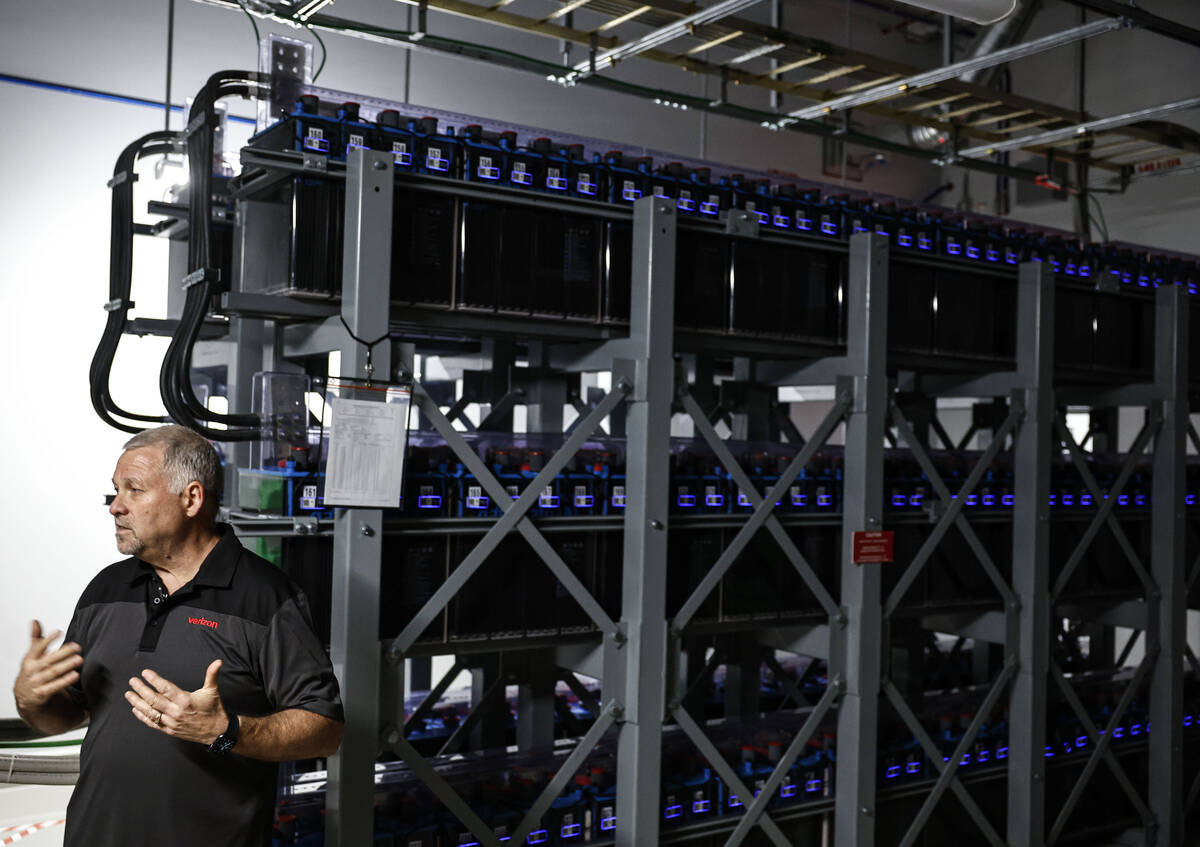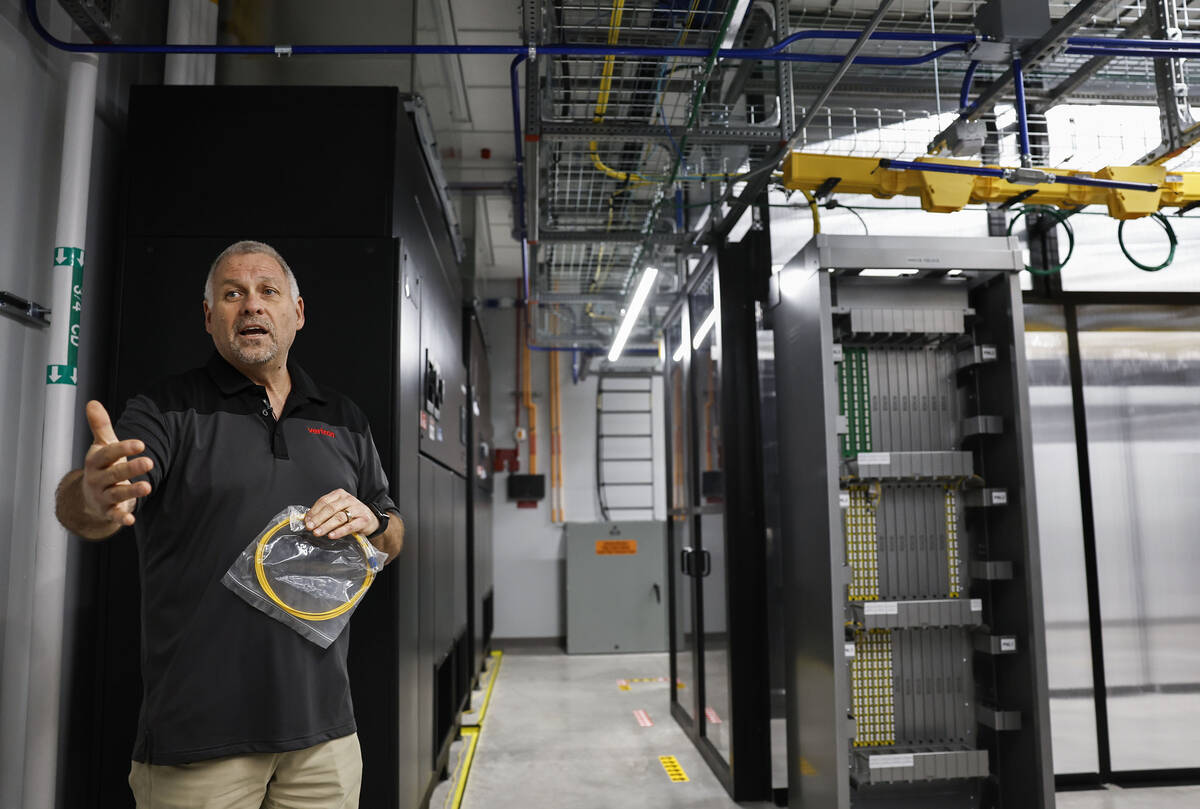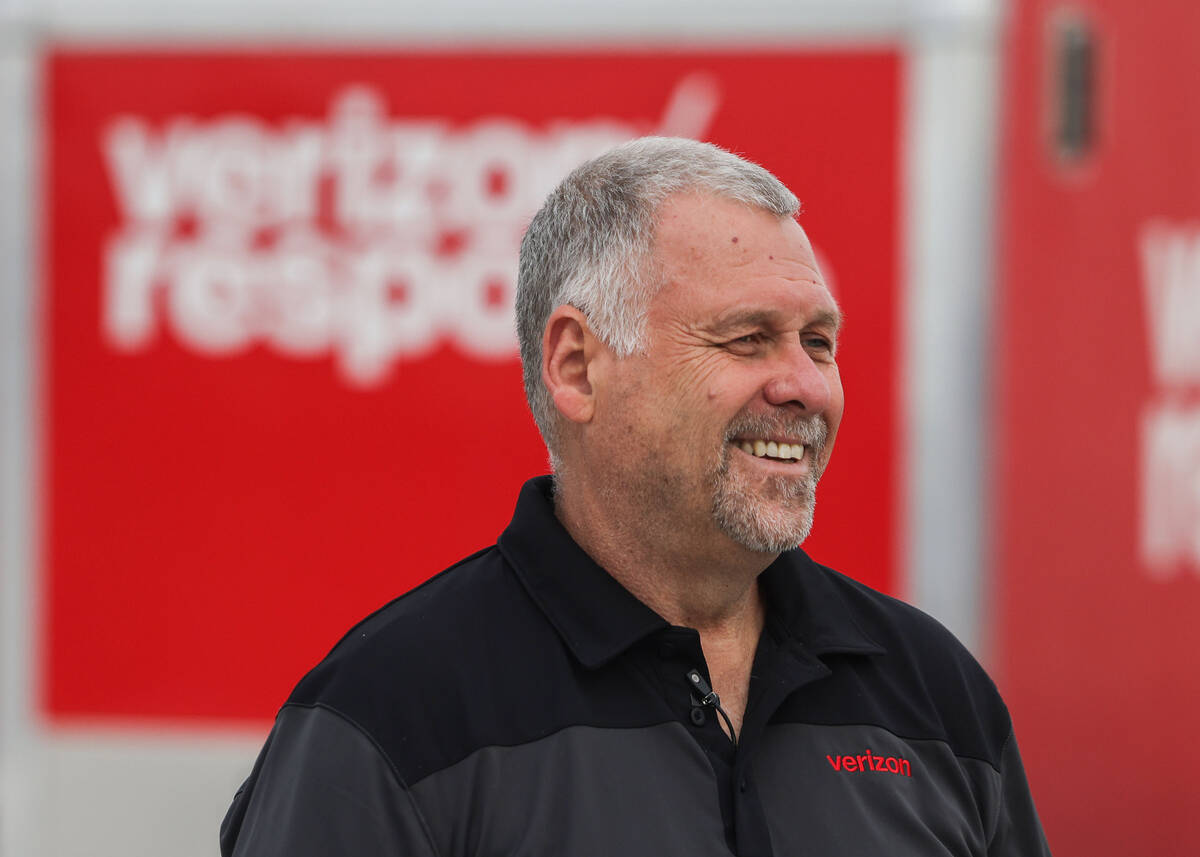Take a look inside this secret Verizon data center in Las Vegas — PHOTOS
In a nondescript building, one of the largest telecommunications companies houses a data center that powers the Las Vegas Valley.
Located in North Las Vegas, Verizon has a 33,000-square-foot data center that houses equipment to provide internet and cell service to customers in the valley, as well as some of the southwestern United States. Not only does it provide services to residential and commercial customers, it also houses the equipment that keeps Las Vegas events alive, ranging from the Superbowl to EDC.
“This is really the heart of what happens in our wireless network,” said David Nelson, senior director for operations. “All those phone calls and data sessions that are out in the network terminate in a building like this. “
The Las Vegas Review-Journal took a look around the facility and how Verizon keeps Las Vegas connected.
What is inside the data center?
Within the data center, 18,000 square feet is dedicated to network capacity and the rest for admin. The center is staffed 24 hours a day, 365 days a year, monitoring the network to “find any issues before our customer does,” said Nelson.
This specific data center is coming up on its one-year anniversary and has still yet to reach its full capacity. It is the second of its kind in the valley and was constructed after the first center outgrew its capacity.
“There’s really three limiting factors in a building like this for a data center like this: that’s power, space and cooling,” said Nelson. “We ran out of at least one of those, if not all of those, in that other building.”
Nelson said the reason for this is because of the “explosive data growth that’s occurring,” in not just the greater Southwest, but the entire country.
Walking through the data center, the ceilings are lined with colorful wires that are neatly tied together, grey walls and rooms, all of which are a part of the greater interconnected Verizon network.
Inside one of the tech rooms is where the guts of the wireless network is housed — which, on Verizon’s end, is not actually wireless.
A myriad of bays line the room, with blinking lights and yellow wires plugged into them. This yellow wire is actually fiber, which are glass strands about the size of human hair, which transport the information from cell sites to the equipment within the tech rooms to keep the network running.
Verizon itself has over one million fiber miles. That is enough to wrap around the Earth 40 times.
Since “heat is not afraid of electronics,” said Nelson, each bay has a small glass room in front of it for heat to escape. That heat is then “sucked up, cooled down and then dumped” into the open area. According to Nelson, this way of cooling is very energy efficient, as well.
While the tech rooms is where the magic happens for customers, one of the most important things the center houses is “redundancies.” In the event of an emergency, these redundancies kick on to ensure the building doesn’t lose power and equipment stays cool.
“Anytime you have electronics, you can have a failure point,” said Nelson. “So, we have redundancy built in, both within the building and also we have some sister buildings that we can switch over to in the event of a failure that can’t be rectified.”
For Verizon, these redundancies come in the form of batteries, generators and an entire sister facility in another state.
The sister city data center would be used if there is a network issue in Las Vegas, which would allow them to switch over to the same network element, just in another location.
If power is cut, then they go to one of their two to three megawatt generators. These massive machines run on 12,000 gallons of diesel fuel. Just one can power the whole building — this data center has two, with the capacity for two more.
Then, if those fail, then they move to batteries. The batteries are constantly being charged and are serviced on a weekly basis. Each battery should last around 30 years.
Outside the facility is where the more portable machines are kept, all of which are named after barnyard animals.
They have COWs, which stands for “cell on wheels,” as well as GOATs, which stands for generator on a trailer and others. These can be deployed during “mass calling events,” like the Superbowl or music festivals, when thousands of people are on their phones at once or during natural disasters when cell sites and power is down.
The facility has shell space available inside, which will be built out as they anticipate even more data growth for the region.
“I think communication is one of those things that you don’t realize how important it is until it goes away,” said Nelson. “We want to do our best to make sure that doesn’t go away.”
Contact Emerson Drewes at edrewes@reviewjournal.com. Follow @EmersonDrewes on X.



